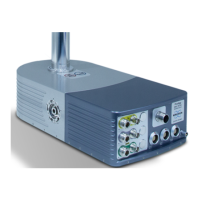76 (93) BRUKER CryoProbe Installation
Check lists
❢ Is there a definite drawing of the CryoProbe System layout for the customer’s
NMR lab?
❢ Will all connectors on the Bruker parts fit the supplies in the customers labora-
tory (mains, gas, water, ...)? Mind the different national standards.
❢ Bring the required documents (Acceptance, Service Report, installation proto-
col, expenses...)
❢ Prepare passwords etc. for optional remote access.
❢ Bring a selection of in-line attenuators for use as safety attenuators.
❢ If a sample changer has to be moved: bring tools and manuals.
❢ If the magnet has to be moved or lifted: bring tools.
❢ Double-check if the customer shim-system is equipped with a blue spinning
stator. If in doubt, prepare an exchange shim system.
❢ Is a receiver or ADC upgrade requested by the customer?
User training 1.3
The following topics should be addressed to familiarize the users - in particular the
NMR superuser - with a new CryoProbe System:
❢ System overview.
❢ Safety (pressurized cryogenic gas cycle, mains failure, sample safety, wearing
protective goggles and gloves, etc.).
❢ User documentation.
❢ Differences to a conventional NMR probe.
❢ Standard procedures like mounting the CryoProbe, cool-down, wobbling,
shimming etc.
❢ Experimental parameters like RF power, receiver gain, operating temperature,
sample tubes etc.
❢ Heating due to decoupling.
❢ Sample temperature control.
❢ Preamplifier selection (crpon etc.), CryoTool, Firmware update.
❢ Safety attenuators (optional).
❢ Cabling, HPPR CRP internal wiring, external RF filters, re-configuration for
conventional probes.
❢ Handling and cleaning the CryoProbe.
❢ O-ring handling.
❢ Monitoring the system, e.g. logbook, system messages, blink codes etc.
❢ User maintenance (He refill, He steel-cylinder exchange, etc.) and periodic
service by B
RUKER.
❢ B
RUKER support and service: addresses, logfile, fault report, repair declaration,
description of circumstances etc.
❢ Shutdown and storage.

